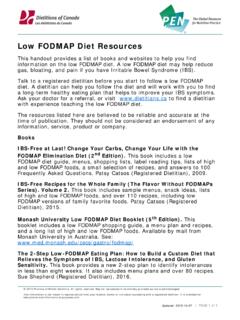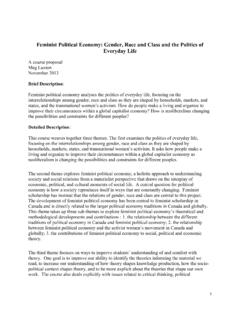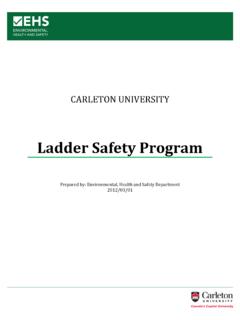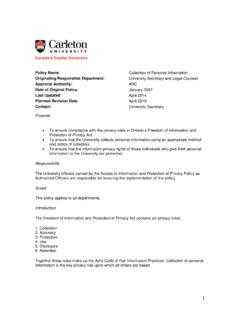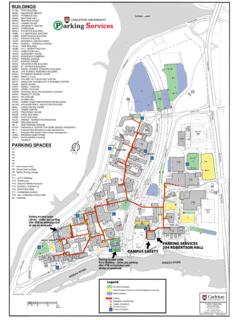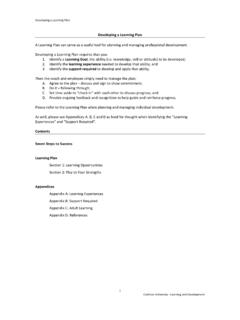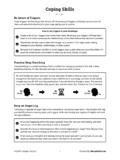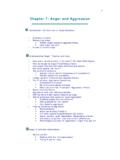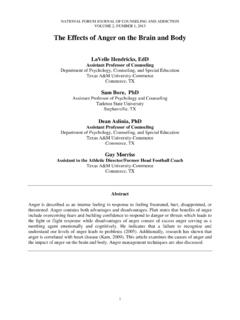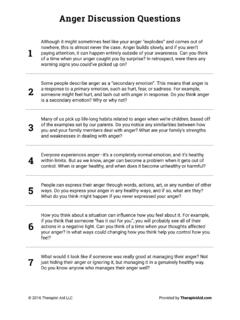Transcription of Anger Management - Canada's Capital University
1 Anger Management Client Handbook Series January 2015 Developed by Carleton University , Criminal Justice Decision Making Laboratory & Ontario Ministry of Community Safety and Correctional Services Ralph C. Serin, Sarah McQuaid, & Angela DeWolf, & the Ontario Ministry of Community Safety and Correctional Services This handbook series is public domain and can be copied and used with clients without cost but also without evidence regarding efficacy. 1 Types of Violence Think about your violent behaviour in the last six months. Read the different types of violence below and pick one that best describes you.
2 If you picked Instrumental Violence, this workbook is not for you because your violent behaviour is less related to Anger and more related to how you think. Please refer to the Criminal Attitudes workbook. The goal of this workbook is to give people Anger control skills in order to prevent future violence. If you picked Reactive Violence, please continue with the rest of the workbook. Reactive Violence: Involves an angry and impulsive violent reaction to frustration or something that we have mistaken as an insult. I get into fights more than the average person. When angry, I tend to react without thinking. Instrumental Violence: Involves purposely harming another person for personal gain. It is often planned and has a purpose.
3 I feel like my actions were necessary to get what I wanted. Some of my violent behaviour was done to gain control. 2 Anger People often confuse Anger , hostility and aggression as the same thing; however, they are separate but related experiences. For instance, the way we think about a situation can affect our feelings and emotions about that situation, which can increase or decrease our risk of violent behaviour. Hostility is a negative way of thinking about the world that can result in aggressive and violent behaviour. Anger is an emotion that can range from mild frustration to full blown rage. It is a natural emotion that can warn us to problems and energize us to act, such as when we feel that someone close to us is being threatened.
4 However, for some people, Anger can get out of control and it can lead to problems in work, relationships, and overall quality of life. Aggression is a behaviour that is meant to cause harm to another person or damage property. It can be physical (hitting someone), verbal (threats) or emotional (putting someone down). It s important to remember that a person can become angry without acting aggressively and a person can be aggressive without being angry ( committing a robbery). Thoughts (Hostility) Emotions ( Anger ) Behaviour (Aggression) 3 Internal Triggers: _____ External Triggers: _____ Triggers Triggers are the different influences in your life that may lead you to become angry. Whether they come from within you (internal triggers) or come from outside sources (external triggers), you still control their impact on your behaviours.
5 What are some of your triggers? List them in the two boxes below. External Triggers Annoyances Abuse Injustice Physical environment Internal Triggers Thoughts Beliefs Feelings Behaviours 4 Example Anger Log Where were you? I was at a bar downtown. Who was around you? Three of my buddies: Mike, Jon, and Dylan. What happened? A guy bumped into me and spilled my drink. How angry were you? (On a scale of 0 being not angry at all to 10 being extremely angry) I was about a 6. How long were you mad for? A few minutes. What physical sensations did you feel? ( , rapid heartbeat, muscle tension, adrenaline rush, nausea) My heart was beating fast, I felt a rush of adrenaline, and I felt kind of lightheaded. What emotions did you feel? ( , frustrated, embarrassed, anxious, guilty) Other than angry I felt kind of embarrassed.
6 When you noticed you were angry, how did you respond? As soon as I felt angry I pushed him back and then punched him. Do you feel you responded well? No, I shouldn t have dealt with it in that way. How could you have improved your response? I shouldn t have resorted to violence so quickly and instead ignored him or checked out the situation better. Anger Log Keeping an Anger Log can help you keep track of what makes you angry (your triggers) so that you can spot it when it starts to happen again. You can then develop coping str ategies to help you deal with your Anger in an appropriate way. Below is an example of an Anger Log. 5 Anger Log Where were you? _____ Who was around you? _____ What happened? _____ What emotions did you feel?
7 ( , frustrated, embarrassed, anxious, guilty) _____ How angry were you? (On a scale of 0 being not angry at all to 10 being extremely angry) _____ How long were you mad for? _____ What physical sensations did you feel? ( , rapid heartbeat, muscle tension, adrenaline rush, nausea) _____ When you noticed you were angry, how did you respond? _____ Do you feel you responded well? _____ How could you have improved your response? _____ Anger Log Now it s your turn to fill out an Anger Log. Describe an event in which you felt angry and acted aggressively because of it. 6 Step 1: Identify your trigger - Describe the situation or person that triggered your negative mood. - My boss is always giving me a hard time. Step 2: Identify your automatic thoughts - Make a list of the automatic thoughts you tell yourself about the situation or your beliefs and expectations of others.
8 - I m sick and tired of being disrespected all the time. He s obviously out to get me Step 3: Identify your emotions - Describe and rate how you feel about the situation based on your self-talk. - angry, upset, frustrated Step 4: Challenge your thoughts - Challenge your negative thoughts. Are your thoughts about the situation correct? Is there proof to back up your beliefs? - It seems like my boss gives everyone a hard time, not just me . - Could the situation be accidental? - The person who pushed me was drunk . Step 5: Replace and practice positive thoughts - Create and practice (for mastery) some positive self-talks that you can use to counter similar negative thoughts in the future. - Relax, I shouldn t take things so personally; I know I m a hard worker.
9 Changing Your Thinking Sometimes when we get angry our thinking can spiral out of control, making it difficult to think clearly ( jumping to the wrong conclusions). In order to change your negative thoughts ( jumping to the wrong conclusions or seeing the worst in everything), you need to be aware of your self-talks that can lead you to become angry. Self-talks are the things you tell yourself about a situation, which can be either positive or negative. As people become angry they often have negative and hostile self-talks, which can be so automatic that they are unaware of them and how they may lead to aggressive behaviour. This means getting angry and then acting aggressively can happen in a few seconds. Below are some steps that can help you identify your negative self-talks and replace them with more realistic and positive ones.
10 7 Step 1: Identify your trigger _____ Step 2: Identify your automatic thoughts _____ Step 3: Identify your emotions _____ Step 4: Challenge your thoughts _____ Step 5: Replace and practice positive thoughts _____ Changing Your Thinking Try challenging your own thinking. Remember, it s not the event itself that can make you angry but how you think about and view the situation. Learning to challenge your hostile and negative thoughts and replace them with healthy ones takes a lot of practice and effort. 8 Aggression Management Anger isn t just revealed in your thoughts and behaviours; it can also have physical symptoms. Below is a list of physical symptoms you might feel when you get angry. Put a check mark in the box next to the ones you often feel when you get angry.
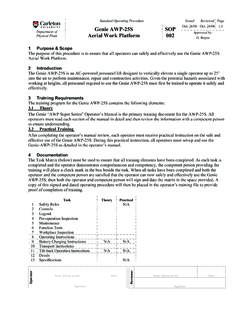
![MATH 1107E [0.5 Credit] Linear Algebra I - Carleton …](/cache/preview/8/c/7/6/6/6/2/e/thumb-8c76662e741e6e47ff8d6ae4a7a3fe3d.jpg)
